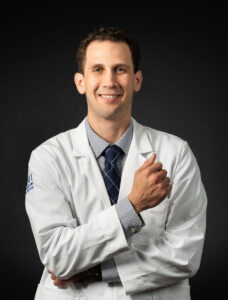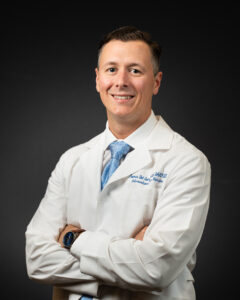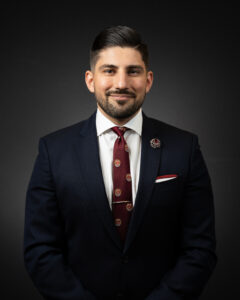Back Pain & Injury Treatment From Orthopedic Spine Specialists In Freehold, NJ & Surrounding Communities
Reviewed by AOSMI’s Fellowship Trained, Orthopedic Spine Surgeon, Dr. Justin Elkrief.
Back pain is one of the most common reasons why people from the Freehold, NJ, area seek treatment from the spine experts at Advanced Orthopedics and Sports Medicine Institute. Offering a comprehensive range of conservative and surgical options for addressing all types of back discomfort, our board-certified, fellowship-trained spine surgeons and other medical professionals focus exclusively on treating conditions affecting the back. Our physicians also collaborate with our pain management specialist, who is double board-certified in interventional pain management and rehabilitation.
Back pain can stem from a variety of underlying causes, such as:
- The core muscles that support the spine can become strained from overuse.
- A vertebral fracture can result from a direct blow to the spine.
- A ruptured disc (herniated disc) can occur if small tears form in the firm outer wall of a spinal disc, allowing some of the disc’s inner gel-like material to seep out and pressure sensitive nerve tissue.
- Degenerative changes can take place in the spine as a result of the natural aging process.
COMMON BACK PAIN & INJURY TREATMENTS AT AOSMI
NON-SURGICAL TREATMENT OPTIONS FOR BACK PAIN
The orthopedic spine surgeons at Spine Care New Jersey are skilled and experienced in performing highly complex surgical procedures designed to relieve severe or chronic back pain. However, we are committed to treating our patients as conservatively as possible. This means that we will first recommend any nonsurgical alternatives that we determine are appropriate, such as physical therapy. To provide fully customized treatment, our orthopedic spine specialists work closely with our physical therapists, who are available onsite at our main office in Freehold, NJ. In cases of upper or lower back pain, spinal injury, or sport-related trauma, our goal is to identify the source and provide an accurate diagnosis and effective treatment plan designed to alleviate discomfort and improve function.
COMMON BACK & SPINE SURGERY PROCEDURES
If a patient’s back pain persists or worsens after several weeks of conservative treatment, we may recommend surgery. In some cases, the skilled spine surgeons at AOSMI can operate on the back using advanced, minimally invasive techniques, which generally allow for faster recoveries without the risks typically associated with traditional spine surgery.
Whether you’re seeking treatment for upper or lower back pain, spinal discomfort, or another type of back injury, our orthopedic spine specialists will build a comprehensive treatment plan that relieves your pain and hastens your recovery. To learn more about our back pain treatment options, contact the Advanced Orthopedic and Sports Medicine Institute to schedule a consultation with a spine specialist at our office in Freehold, NJ.
Frequently Asked Questions About Back Pain & Injuries
How long does it take to recover from back surgery?
What typically causes lower back pain?
How do you know if back pain is muscular or spinal?
How can I relieve lower back pain at home?
What are the three most common back injuries?
How long does it take to recover from back surgery?
Recovery time from back surgery varies depending on the type of surgery, the patient’s overall health, and the extent of the problem being treated. In general, patients may experience a gradual improvement over several weeks to months. Less invasive procedures may have shorter recovery periods, while more complex surgeries might require a longer timeframe for full recovery. Your surgeon will provide personalized guidance based on your specific case.
What typically causes lower back pain?
Lower back pain can be caused by a range of factors, including:
- Muscle Strain: Overexertion, lifting heavy objects, or poor posture can strain back muscles.
- Herniated Disc: When the soft material within a spinal disc pushes out, it can press on nearby nerves.
- Degenerative Disc Disease: Wear and tear of spinal discs over time can lead to pain.
- Spinal Stenosis: Narrowing of the spinal canal, often due to aging, can put pressure on nerves.
- Osteoarthritis: Breakdown of cartilage in the spine’s joints can cause pain and stiffness.
- Sciatica: Compression or irritation of the sciatic nerve can cause radiating pain down the leg.
How do you know if back pain is muscular or spinal?
Distinguishing between muscular and spinal causes of back pain may require a professional evaluation. Generally:
- Muscular Pain: Muscle-related pain often feels localized, may worsen with movement, and can be tender to touch. It may be aggravated by specific activities or postures.
- Spinal Pain: Spinal pain can be more diffuse and radiate down the leg or arms. It may be accompanied by numbness, tingling, or weakness. It might also worsen with certain movements or positions.
A proper diagnosis involves a physical examination, possibly imaging tests, and a detailed medical history to determine the source of the pain.
How can I relieve lower back pain at home?
Mild lower back pain can often be managed at home with the following steps:
- Rest: Short periods of rest can help initially, but avoid prolonged bed rest.
- Heat and Cold Therapy: Applying heat or ice packs to the affected area can provide relief.
- Over-the-Counter Medications: Non-prescription pain relievers like ibuprofen or acetaminophen may help.
- Gentle Stretching: Perform gentle stretches and exercises to improve flexibility and strength.
- Proper Posture: Maintain good posture while sitting, standing, and lifting.
- Ergonomic Support: Use supportive pillows, cushions, or ergonomic furniture.
If the pain persists or worsens, seek professional medical advice.
What are the three most common back injuries?
Three common back injuries include:
- Herniated Disc: When the outer layer of a spinal disc tears, allowing the inner material to press on nerves.
- Strains and Sprains: Overstretching or tearing of muscles or ligaments in the back due to sudden movements or overuse.
- Spinal Fractures: Fractures in the vertebrae, often caused by trauma, osteoporosis, or other medical conditions.
What are some non-surgical options for lower back pain treatment?
Non-surgical treatment options for lower back pain include:
- Physical Therapy: Tailored exercises and stretches to improve strength, flexibility, and posture.
- Medications: Pain relievers, anti-inflammatories, and muscle relaxants can help manage pain and inflammation.
- Chiropractic Care: Manipulative therapies to realign the spine and relieve pain.
- Acupuncture: Inserting fine needles into specific points to stimulate healing and alleviate pain.
- Spinal Injections: Corticosteroid injections to reduce inflammation and alleviate pain.
- Lifestyle Modifications: Weight management, regular exercise, and ergonomic adjustments to daily activities.
Find your Provider










